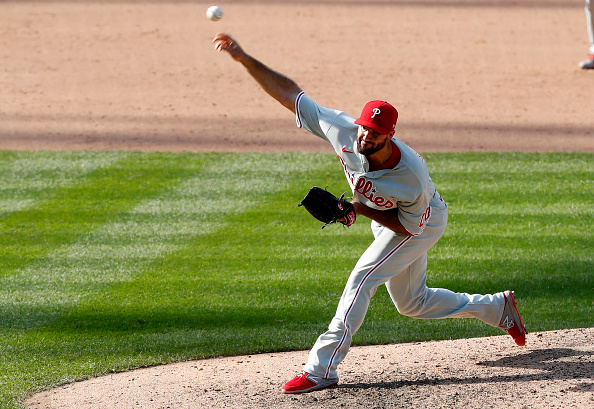On Aug. 22, the Boston Red Sox sent fan favorite reliever Brandon Workman, along with Heath Hembree, to the Philadelphia Phillies.
In return, Boston acquired right-handers Nick Pivetta and Connor Seabold. Though the Red Sox have yet to showcase either starter, it’s safe to say the team has already won the trade.
Now you might be asking: Why? And that’s a fair question to have. The Red Sox had two solid relievers, one of whom was arguably the most dominant in baseball a season ago. How could they possibly have won the trade without seeing either returning piece pitch in the big leagues?
The control game
For starters, they’re getting three years of control on Nick Pivetta. Despite his struggles at the MLB level thus far, the 27-year-old has shown lots of promise in his professional career. While his 5.50 career ERA and 4.64 FIP in 396.1 innings is alarming, they have time to work with him.
Besides, there’s a lot to like about his curveball-slider combination. Over the past two seasons, Pivetta has thrown his curveball 1,163 times to the tune of a 1.90 xFIP and a strikeout rate of 31.7 percent on it. As for his slider? Over the same sample, his slider (667 uses) has a 3.83 xFIP and a .260 xwOBA against it.
On the other hand, Seabold is a “too soon to tell” kind of prospect, but they have him for at least six years. Drafted in the third round back in 2017, Seabold has been staked to a 3.39 FIP and a 25.5 percent strikeout rate in the minors. Though not possessing overpowering stuff, he has great command (5.8 percent walk rate) and projects to fill out the end of the rotation.
They acquired those two for half a season of Brandon Workman, and a maximum of a season-and-a-half of Heath Hembree.
Performance
These two points go hand-in-hand. Since being acquired by the Phillies, Workman and Hembree have struggled mightily. Overall, Workman has a 5.89 ERA, a 5.15 FIP, and just a 21.9 percent strikeout rate. Compare that to last year, and you have a 4.01-run increase in ERA, a 2.69-run increase in FIP, and a 14.5 percent decrease in strikeout rate.
Those overall numbers look even worse since the trade.
As for Hembree, he’s been one of the worst pitchers in baseball since the trade. In 7.2 innings for the Phillies, the right-hander has an 8.22 ERA, a 13.23 FIP, and a 4.80 SIERA. Not that there’s much stock to be held in reliever wins above replacement, but it’s worth noting that Hembree’s is -0.6 since the trade.
To cost your team almost a tenth of a win every inning your pitch is ironically impressive. It wouldn’t be shocking if he wasn’t tendered a contract at season’s end.
Workman and Hembree, based on wins above replacement, have cost the Phillies a win-plus since arriving there. When you couple that with the length of control Boston is getting with Pivetta and Seabold, it becomes a no-brainer. Simply put, Chaim Bloom won the trade.
There was some serious brush-back from the Red Sox faithful when Workman was traded. However, not only has it proven to be the right move, but Boston has seemed to already come out ahead without even showcasing either return-piece.
If this can continue, Red Sox Nation is going to love the Chaim Bloom era.
Check us out on our socials:
Twitter: @PTSTNews and @TalkPrimeTime
Facebook Page: Prime Time Sports Talk
Join our Facebook Group: Prime Time Sports Talk
Instagram: @ptsportstalk
Follow Jordan Leandre on Twitter @JordanLeandre55
Main Image Credit: Embed from Getty Images







